#Animal Language
Explore tagged Tumblr posts
Text
Animalistic Speaking Language
[PT: Animalistic Speaking Language]
a flag for alters who primarily / exclusively speaks animalistic languages rather than what the system may normally speak. the most common reason for this is the system being bilingual and/or the fact their alterhuman/nonhuman in some shape or form.



[ID: in Alt text]

[Tags] @system-term-archive, @pluralitywords, @pluralterms, @radiomogai, @plurchive & @rwuffles

#✨⚫️✨ : post#🔆🐰 : pride#🦉🌑 : pride#🔆 : pride#🦌🩸 : pride#🌙: pride#silent fellowship#the silent fellowship#sys#plural system#system#plural#Animalistic Speaking Language#non main language speaking#system term#plural term#system coining#plural coining#Animalistic Language#Animal Language
35 notes
·
View notes
Text
A phonetic alphabet for sperm whales proposed by Daniela Rus, Antonio Torralba and Jacob Andreas.
The open-access study published in Nature Communications titled 'Contextual and combinatorial structure in sperm whale vocalisations', has analysed sperm whale vocalizations and as part of that, a phonetic 'alphabet' has been proposed for them.
So cool. Dolphins next please.
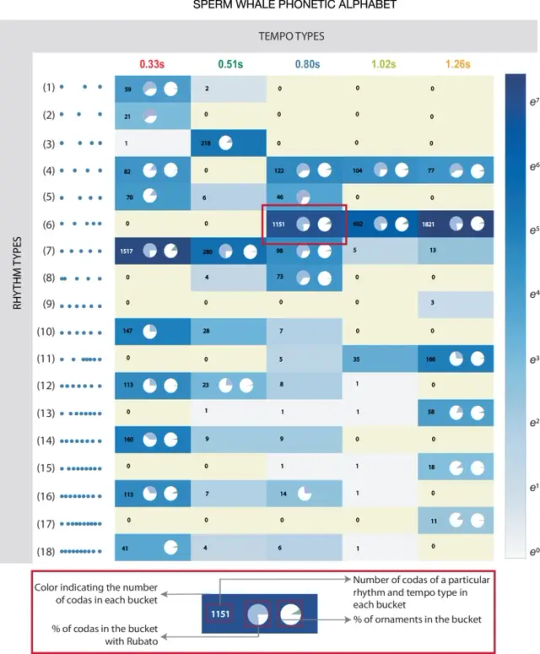
MIT news also did an article on this
#whale#sperm whale#cetacean#language#animal language#animal vocalisation#click language#clicks#inspiration#conlang#language creation#spec bio#speculative biology#speculative evolution#speculative worldbuilding#speculative fiction#inspo#machine learning#ai#communication#phonetic#alphabet#so cool#cool shit#nature communications
67 notes
·
View notes
Text
Recordings of ravens in the wild show complex patterns of vocalisations believed to be consistent with language. Immediately after a human leaves an area a unique series of vocalisations is recorded along with movements that mimic some human actions. This is believed to be a form of mockery.
12 notes
·
View notes
Text
I think we should learn how to communicate with orcas so we can ask them what they think is going on in the world. I think their answers might be very interesting.
4 notes
·
View notes
Text
i have a question about cat comprehension (and this probly applies to other pets too)
if pets like BilliSpeaks can comprehend human language when spoken outloud, (shown by when they respond in the same language via button-pressing)……
do ALL cats comprehend spoken human language from their owners, and most just cant demonstrate it cuz they dont have buttons?
i know sometimes dogs react behaviorally to the word “walk”!!
do most pets straight-up comprehend full sentences?????
#cats#dogs#fluentpet#hextiles#aac#aac device#talking dogs#talking cats#animal intelligence#augmentative and alternative communication#animal comprehension#cat intelligence#dog intelligence#animal language#billispeaks#whataboutbunny#science#neurology#language#linguistics#noam chomsky#syntax
44 notes
·
View notes
Text
youtube
The Secret Language of Elephants
Did you know elephants can communicate over miles? Discover their fascinating infrasound and its implications!
Check out my other videos here: Animal Kingdom Animal Facts Animal Education
#Helpful Tips#Wild Wow Facts#elephants#animal communication#wildlife#nature documentary#elephant behavior#conservation#elephant intelligence#animal language#wildlife protection#African elephants#Asian elephants#animal studies#endangered species#nature lovers#wildlife enthusiasts#ecology#animal science#elephants in the wild#elephant habitats#biodiversity#animal emotions#nature conservation#wildlife research#zoo education#animal behavior studies#youtube#animal behavior#animal kingdom
3 notes
·
View notes
Text
Do animals have religion?

A thing about working with animals is, that there are often two extremes. There are the people who humanize animals too much, imagining them to have all those complex thoughts. And there are the people who will go: "Do not humanize animals at all. They are not people."
And I kinda think both are wrong. I still remember that back when I was still being raised religious I got into a long winded discussion with a monk (my catholic school was once a monastery, with some monks still living there) about whether or not animals have souls. Something the monk vehemently denied, while I was like: "Humans are not that much more intelligent than whales or elephants. They have complex feelings, hence they have to have souls. We can argue whether all animals have souls, but a lot of them do."
But there is of course the other side to it. The biological and animal behavior side. And yes, there are at times people who will see animals as biological machines, who are like programmed to do this instinctual behavior. And those people I also will shake my head about. Because even if you own pets, you will know that they have different characters. They are individuals. Hence they are not "machines".
A question that animal behaviorists and also theologians and religious scientists argue about, though, is whether or not some animals have religion. Now, please note, it is not an argument about whether ALL animals have religion. But some. Mostly the discussion is about some apes, elephants and some whale species. Some scientist argue that corvidae might also have something along the lines. Because either have been found to show behavior mourning their dead, in some cases also doing funeral rites, and other ritualistic behavior, that does not make sense from an instinctual level as it does not further survival.
Of course we now run into the problem that we just cannot talk with the animals. While there are some underfunded studies going on trying to decipher the language of dolphins and elephants - going so far that we have figured out a couple of "words" in their languages - we so far are unable to have philosophical talks with them. So, most we can do is watch their behavior and come to conclusions from that.
As such we know at least that bush elefants engage in ritualistic behavior that are apparently linked to phases of the moon. Which is why some scientists wonder whether or not elefants pray to a moon god(ess).
Now, of course we cannot know whether one or the other is true, as long as we do not understand them. But I do think it is a mistake to just assume that they cannot have that. We humans are only animals after all. Just a kind of animal that is capable of complex thought. But there is no reason to assume that certain other animals who are highly intelligent are not able of complex thought. And with that might be able to question their place in this world and how they got here.
We do know, that some of these animal species are able to communicate complex ideas with each other. We see that with the orca behavior for example. We have seen it in elephant behavior, too. Or with covidae. Heck, yes. We have also seen it in sharks, a species where we know still super little of how they actually communicate with each other.
So, is it really so out of the question to think that they might communicate about things like that?
And one quick aside: I still hate those experiments about whether animals having a sense of self by sticking a dot onto them and putting them in front of a mirror. I mean, like, you do not need to be able to recognize yourself in a fucking mirror to have a sense of self. Not the least because not all animals are so heavily focused on their sense of sight as ablebodied humans tend to be. You do not proof that an animal has a sense of self. You proof that it has visual self-recognition and understands what a fucking mirror is.

15 notes
·
View notes
Text
#languages#language#trolleng#trolledu#speaking#animal language#animal languages#sperm whale#sperm whales#what they are saying#what r u saying?
2 notes
·
View notes
Photo

Dogs may ‘picture’ objects in their minds, similarly to people
Researchers used EEG testing to measure brain waves in dogs and found evidence suggesting that dogs can differentiate between words for different objects. The study indicates that dogs may have the ability to understand words and their corresponding objects, similar to how humans do. This research sheds light on canine cognition and language learning, showing that dogs may have some level of language comprehension. The study highlights the unique communication abilities of dogs and other animals, providing insight into the evolution of language.
#dog communication#animal language#cognitive research#animal behavior#pet science#language learning#dog training#brain wave studies#eeg#pet#animal#dog#language processing#object recognition
2 notes
·
View notes
Text
REVISION:
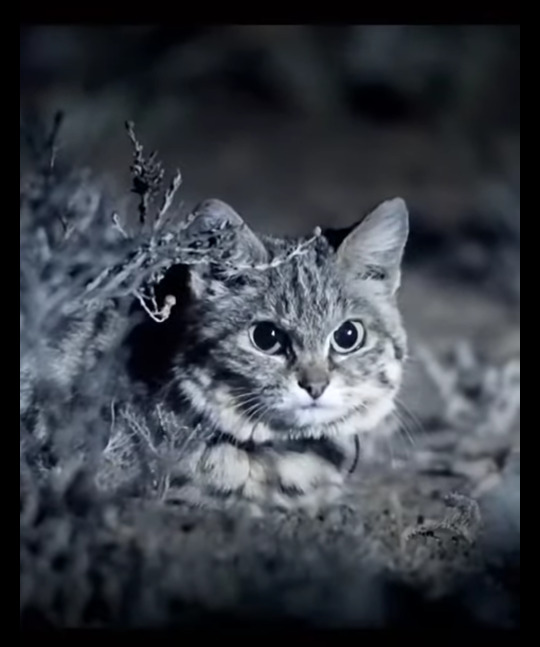
Oh fuck. Oh fcuk I made an error in judgment. Those are the eyes of a spring-loaded murder loaf. That is bloodlust. Oh fuck how am I gonna get out of my car
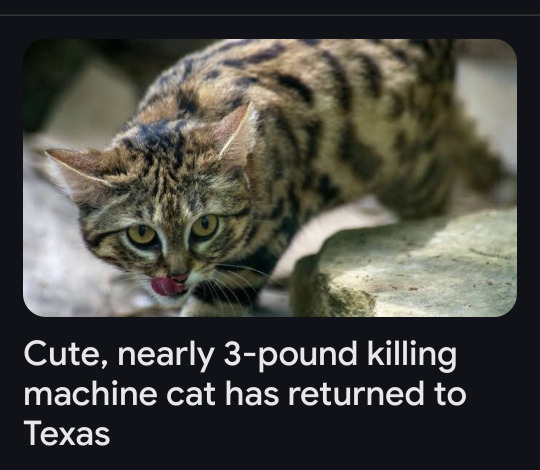

That has to be the most humiliating way to describe one of Earth's most terrifyingly effective predators.
#cats#cat#african black footed cat#felis nigripes#and then i put on my murder face#animal language#RUN
51K notes
·
View notes
Text
There's this sort of anthropomorphizing that inherently happens in language that really gets me sometimes. I'm still not over the terminology of "gravity assist," the technique where we launch satellites into the orbit of other planets so that we can build momentum via the astounding and literally astronomical strength of their gravitational forces, to "slingshot" them into the direction we need with a speed that we could never, ever, ever create ourselves. I mean, some of these slingshots easily get probes hurtling through space at tens of thousands of miles per hour. Wikipedia has a handy diagram of the Voyager 1 satellite doing such a thing.

"Gravity assist." "Slingshot." Of course, on a very basic and objective level, yes, we are taking advantage of forces generated by outside objects to specifically help in our goals. We're getting help from objects in the same way a river can power a mill. And of course we call it a "slingshot," because the motion is very similar (mentally at least; I can't be sure about the exact physics).
Plus, especially compared to the other sciences, the terminology for astrophysics is like, really straightforward. "Black hole?" Damn yeah it sure is. "Big bang?" It sure was. "Galactic cluster?" Buddy you're never gonna guess what this is. I think it's an effect of the fact that language is generally developed for life on earth and all the strange variances that happen on its surface, that applying it to something as alien and vast as space, general terms tend to suffice very well in a lot more places than, like... idk, botany.
But, like. "Gravity assist." I still can't get the notion out of my head that such language implies us receiving active help from our celestial neighbors. They come to our aid. We are working together. We are assisted. Jupiter and the other planets saw our little messengers coming from its pale blue molecular cousin, and we set up the physics just right, so that they could help us send them out to far stranger places than this, to tell us all about what they find out there.
We are assisted.
And there is no better way to illustrate my feelings on the matter than to just show you guys one of my favorite paintings, this 1973 NASA art by Rick Guidice to show the Pioneer probe doing this exact thing:

"... You, sent out beyond your recall, go to the limits of your longing. Embody me. ..."
Gravity assist.
#space#astronomy#astrophysics#language#paintings#the antidote to despair is awe#the quote is from the poem ''go to the limits of your longing'' by rainer maria rilke and translated by joanna macy#druid speaks#the thing that got me thinking about this was watching Animation VS Physics tbh#because the whole gravity assist section is so epic in scale and the music swells and its so. Romantic in the art movement sense#i mean the whole thing is epic like that. but seeing the term ‘’gravity assist’’ pop up did something to my brain specifically
17K notes
·
View notes
Text
Weird Science: AI’s Impact on Animal Research
New Post has been published on https://thedigitalinsider.com/weird-science-ais-impact-on-animal-research/
Weird Science: AI’s Impact on Animal Research
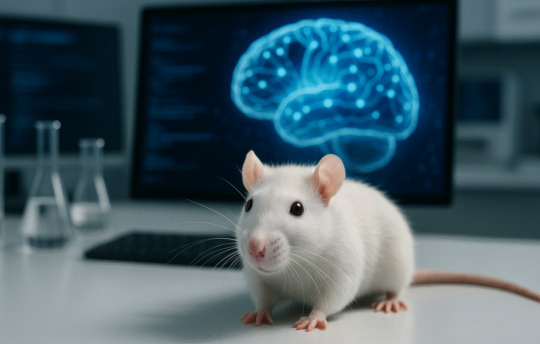

Animal research has always walked a tightrope between necessity and controversy. It has yielded critical breakthroughs in medicine, psychology, and biology. Yet, the ethical dilemmas are undeniable. Enter artificial intelligence—a technology often questioned for its own ethics, now reshaping one of the most ethically fraught areas of science. The result is a heady mix of progress, promise, and paradox.
At the same time, this mix is transforming not only how we understand animals, but how we treat them, study them, and ultimately, how we redefine the ethics of research.
Cracking the Code: AI and Animal Language
In one of the most mind-bending breakthroughs of recent years, machine learning models have begun decoding the languages of animals. Natural language processing, usually reserved for human text and speech, is now being applied to the deep clicks of whales, the complex howls of wolves, and even the seemingly chaotic chatter of bats.
Project CETI (Cetacean Translation Initiative), for instance, is applying GPT-style models to analyze the vocalizations of sperm whales. Using AI, researchers are discovering that these sequences might not just be communication but structured language, rich with rules, syntax, and contextual nuance. AI is parsing patterns we never noticed, illuminating relationships between sound sequences and social behavior.
And it’s not just marine life. Studies on prairie dogs—using convolutional neural networks—have shown that these animals issue specific alarm calls that describe the size, color, and even speed of predators. AI has made it possible to distinguish between alarm calls for a “tall man in a yellow shirt” versus a “short woman in blue.” The level of descriptive detail is shocking—and it repositions these animals as narrators of their environment.
As these models mature, we’re edging closer to real-time translation tools for interspecies communication. The philosophical implications are enormous. If animals have languages, and we can interpret them, our definition of intelligence—and who deserves moral consideration—may change forever.
Talking Back: Toward Interspecies Dialogue
The next frontier isn’t just decoding animal language—it’s learning how to respond. AI is helping researchers go beyond passive interpretation and into the realm of active communication. Using reinforcement learning and audio synthesis, some labs are now experimenting with calling back to animals in their “own language.”
At the Georgia Institute of Technology, scientists have used AI to synthesize robotic bee dances—yes, the waggle dance—that can influence the movement and decisions of real bees. In labs studying birdsong, AI-generated responses are used to manipulate mating behavior or warn of nonexistent predators. The animals, astoundingly, respond as if the AI-generated cues came from their own kind.
These early dialogues are crude but significant. They’re being refined by feedback loops: AI analyzes the animal’s reaction to a synthetic call and adjusts the next one accordingly. This has profound implications not just for research, but for conservation, habitat design, and even ethical engagement with wild populations.
Imagine drones calling herds of elephants away from poaching zones using synthesized rumbles. Picture reintroducing endangered species with AI tools that teach them how to navigate their environment. These aren’t pipe dreams—they’re under active development in research centers around the world.
AI in the Wild: Revolutionizing Conservation
Traditionally, animal research meant confined spaces—labs, zoos, aquariums. But AI is extending science into the wild with a new generation of remote sensors, drone surveillance, and predictive models. Conservationists are now using computer vision and satellite data to monitor animal populations at scale, without disturbing ecosystems.
Drones equipped with machine learning software can identify species, track movement patterns, and flag signs of distress in real-time. In the Arctic, AI algorithms monitor polar bear movements from space. In African reserves, deep learning tools are being used to spot poachers by recognizing suspicious patterns from thermal camera footage.
Moreover, AI-powered bioacoustics platforms can detect and classify animal calls across rainforests, oceans, and grasslands. Tools like Arbimon and Rainforest Connection use neural networks to monitor endangered species like orangutans and jaguars. This creates a kind of “internet of animals”—a digital meshwork of data points pulsing through Earth’s wild zones.
These tools not only expand the reach of researchers but democratize conservation. Citizen scientists can now help classify data, feed machine learning models, and even receive alerts on species in distress. The result is a decentralized, AI-assisted network for global ecological stewardship.
A New Lens on Evolution and Ecology
AI isn’t just improving how we observe animals—it’s giving us tools to understand evolution itself. Machine learning models trained on fossil records, current species genomes, and environmental data are being used to simulate evolutionary pathways. This can predict not only what extinct animals looked like, but how they may have behaved, adapted, or failed. Not to mention, models that respect the tenets of cloud security and are trained on ‘worthy’ datasets will be more trustworthy.
Researchers at Harvard and Google DeepMind are collaborating on predictive ecology projects that model how entire ecosystems could shift under different climate scenarios. These tools forecast how predator-prey relationships, migration patterns, and biodiversity might evolve over time. It’s not just a glimpse into the past, but a crystal ball for the future.
More granularly, AI is now used to study niche adaptations—like how certain lizards evolve stickier feet on different surfaces, or how fish brains adapt to urban noise. These micro-level insights inform broader theories about resilience, adaptation, and environmental pressures.
The net effect? A shift from reactive to predictive science. We’re no longer waiting for extinction events to unfold. We’re forecasting them—and, with enough will, potentially averting them.
De-Extinction and AI-Driven Resurrection
One of the most controversial applications of AI in animal research is de-extinction—efforts to bring back species like the woolly mammoth, the passenger pigeon, or the thylacine (Tasmanian tiger) are no longer sci-fi stunts. They’re coordinated, data-heavy scientific initiatives where AI plays a pivotal role.
Cloning extinct animals requires an absurdly complex understanding of their genomes, physiology, behavior, and environmental niche. AI is being used to fill in the blanks. Generative models help reconstruct extinct DNA sequences by comparing them to those of modern relatives. Computer vision tools analyze museum specimens to infer muscle structure and skin patterns. Even simulations of long-lost ecosystems are powered by reinforcement learning algorithms to predict how a de-extinct species might behave.
Colossal Biosciences, one of the most vocal players in this space, is using AI to model genetic edits in elephants to create a cold-tolerant mammoth hybrid. AI helps them predict which gene combinations are viable, which traits will express, and how the animal will respond to Arctic climates.
Whether or not these projects succeed, they’re already advancing our understanding of genetic engineering, epigenetics, and synthetic biology. And they force us to ask: if we can revive a species, should we? And who decides what belongs in the modern biosphere?
Final Thoughts
So, where does this leave us? We’re standing at a weird and wonderful crossroads. AI is reducing the need for live animal subjects, improving welfare, and giving us deeper insights into animal cognition. But it’s also raising new questions about control, surveillance, and the nature of consciousness itself.
The weirdness lies not just in the technology, but in what it reveals about us. As AI teaches us more about animals, it may also change how we see ourselves—as researchers, as stewards of other species, and as co-inhabitants of a complex, interconnected web of life.
AI isn’t just reshaping animal research. It’s reframing the very questions we ask, the assumptions we hold, and the responsibilities we carry. In a world where digital minds are helping us understand biological ones, the future of science might look a little less like a lab, and a little more like a dialogue.
And maybe that’s the weirdest science of all.
#ai#ai tools#AI-powered#alerts#Algorithms#animal language#Animals#applications#Arctic#artificial#Artificial Intelligence#audio#bats#bee#bees#Behavior#biodiversity#Biology#Blue#brains#change#climate#Cloud#Cloud Security#code#cognition#Color#communication#computer#Computer vision
0 notes
Text
0 notes
Text
Man unintentionally teaches his Corgi sign language! 😊 Follow me for more smart puppers!
#funny#cute#pets#animals#humor#comedy#dogs#jokes#lol#positivity#memes#love#meme#haha#hilarious#life#omg#adorable#family#dogs of tumblr#wholesome#doggo#cute animals#dog#aww#lmao#deaf#sign language#american sign language
30K notes
·
View notes
Text
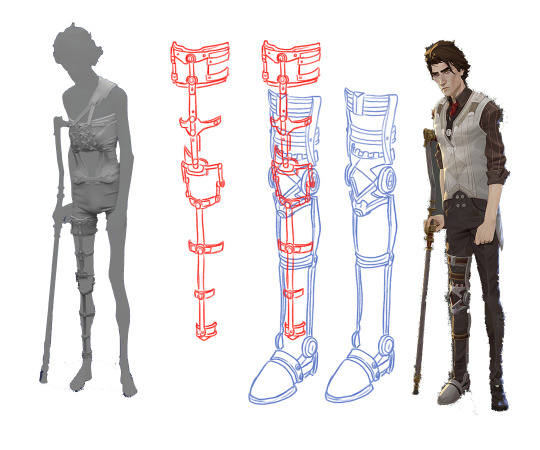
Was looking at refs and since Viktor has two different leg braces I was wondering, do we think he wears them simultaneously?? The refs don't perfectly line up perspective-wise so it's hard to tell but parts of the one he wears during the Hexcore scenes look like they could maybe line up with the brace that he wears over his clothes, but also some parts really don't and look like they'd be super uncomfy. Also HOW does he take these on and off. Experts weigh in
#viktor#arcane#ig my assumption would be that he wears both simultaneously cause in the scene where he injects the shimmer#it seems implied that he just threw off his clothes and kept experimenting#so one might assume he was already wearing the smaller one underneath#tho it is a funny image to think of him just being like 'one sec i gotta go all the way home and grab my other brace to do this'#he can take off the back brace too cause hes not wearing it in the scene where he's in the hospital bed and you can see his shoulder#where the strap would be#but that one seems to make even less sense functionality wise#everything looks like its screwed together#or screwed INTO him#but only the top bolts on his spine are i think#in the close ups of his back brace model it looks like theres cushioning underneath the parts of it that cover the rest of his spine#so he can take it off. but HOW#what parts of it unscrew/detatch to pull open and off#does it not do that at all and he just has to shimmy it off his shoulder and all the way down his legs to get it off like a romper#the shape language of the designs are cool but like. tell me how it wooorrkkksss#forgive me if im just dumb and dont know at all how braces work and theres a very simple practical explanation for all this#any king who wants to infodump about mobility aids at me....the floor is yours#something to be said i suppose about the fact that zaunites have crazy prosthetics with wild augmentations that work flawlessly#and piltover's like. idk heres some fucking uncomfortable ass metal. salo gets wheelchair in non ada compliant place#they havent ever needed to adapt to accommodate disabilities etc etc#or maybe artists were just like 'heres a design' and everybody clapped and didnt give it a second thought#and then they just turned off the visibility on the mesh when they didnt need it knowing thered not be a scene where its taken off#dont even wanna THINK about what that rig would look like#like 40 different controllers#soft body and rigid hard surfaces needing to move together....#a cold chill just shot up my spine#<- guy who is only an animator and doesnt know how to rig#forgive the magic wand tool with zero cleanup. i am lazy
5K notes
·
View notes
Text
I know my dog definitely had some kind of doggy language because after going mostly deaf she would mutter loudly to herself when she was annoyed at something my mom or I had done.
1 note
·
View note